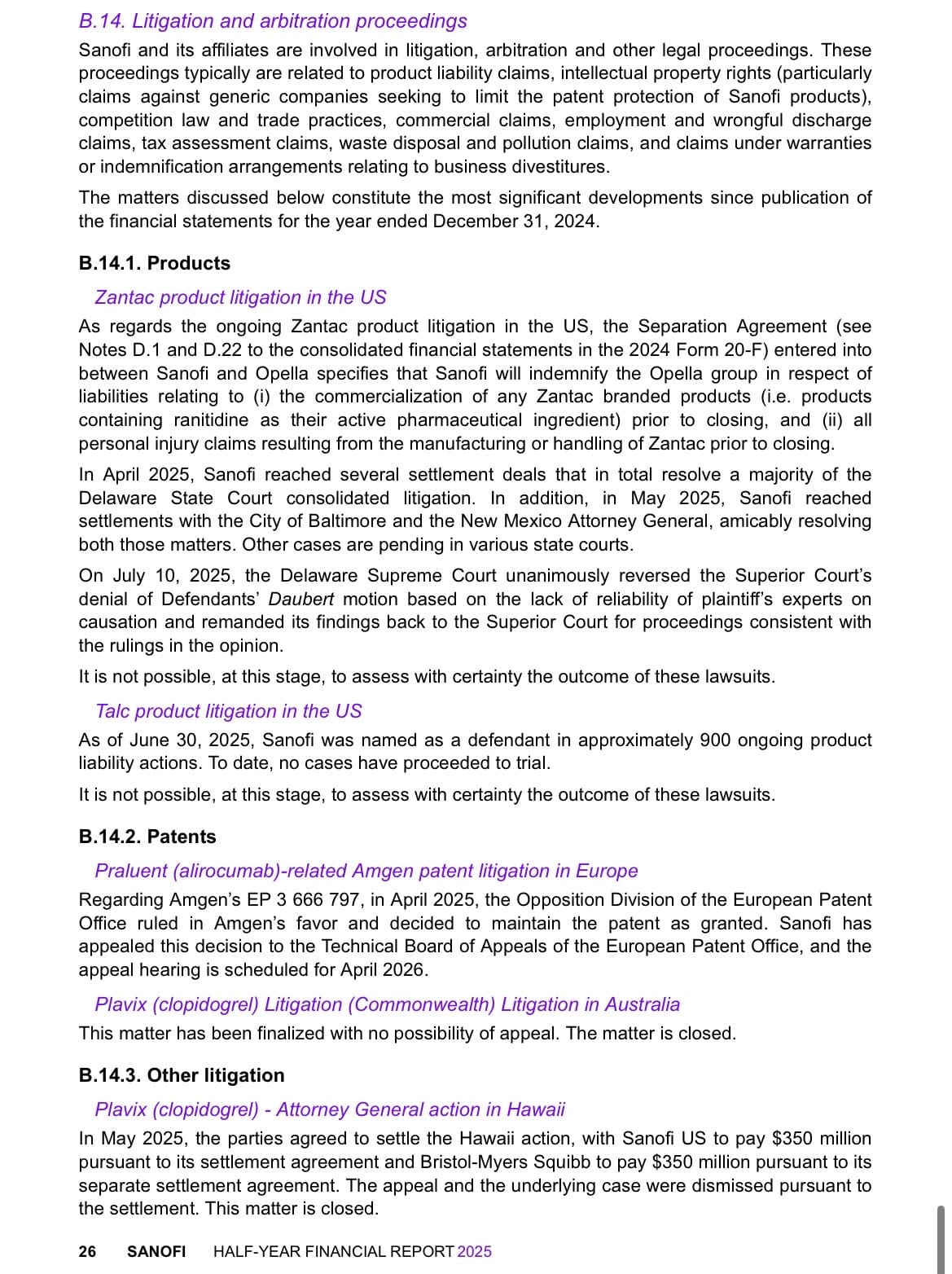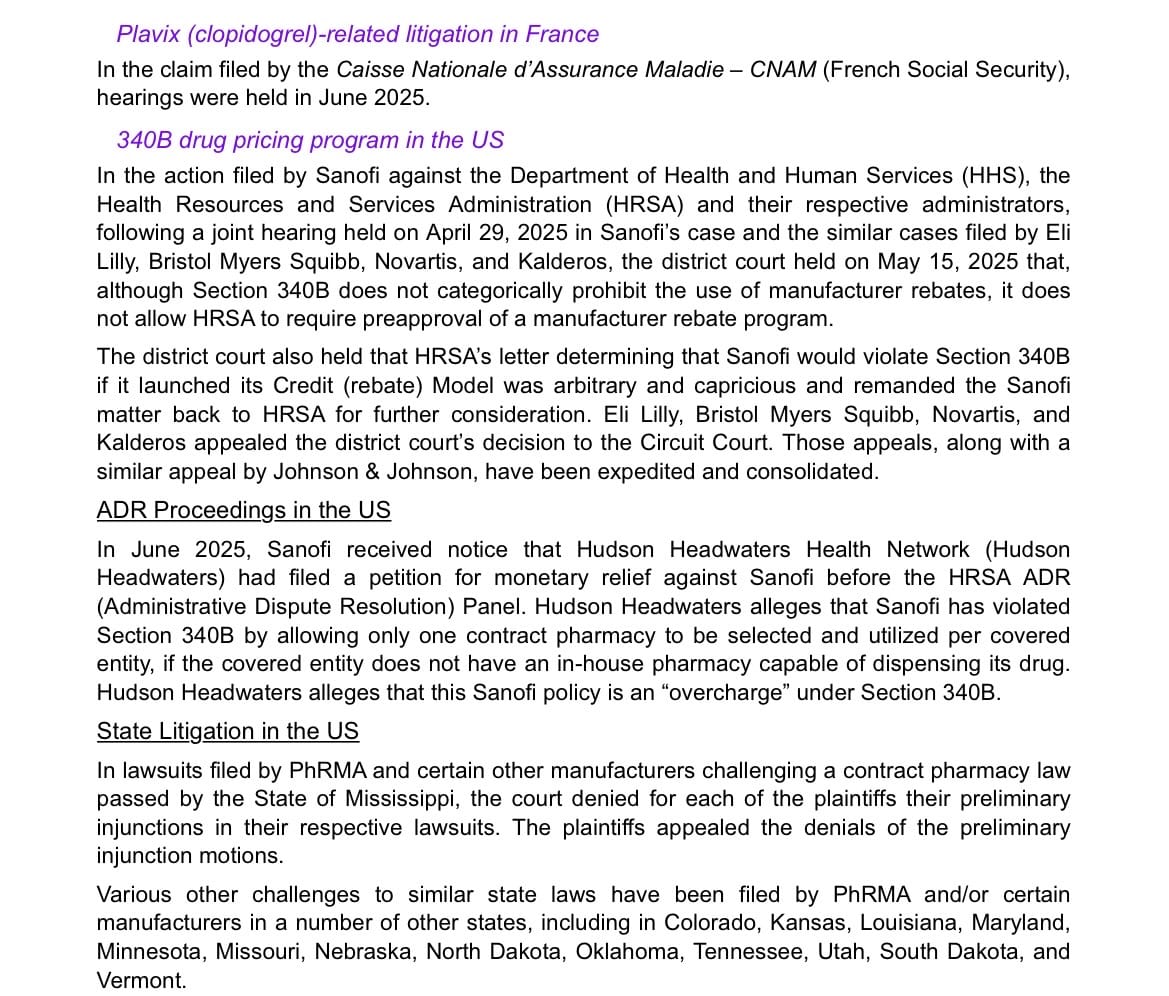Sanofi Just Filed an SEC Report, and Hid a $15 Billion Federal Lawsuit
On October 27, 2025, Sanofi-Aventis S.A. submitted its official Form 6-K to the U.S. Securities and Exchange Commission, a 58-page half-year report legally required to list every major event that could affect the company’s financial condition.
It was supposed to be transparent. Instead, it’s proof of concealment.
Nowhere in that filing does Sanofi disclose:
• The $15 billion federal whistleblower lawsuit currently active in the U.S. District Court for Oregon,
• The IRS involvement confirmed by the Whistleblower Office earlier this year,
• The JAMS arbitration that’s been pending since March 4, 2025,
• Or the five entered defaults and procedural misconduct already on the court docket.
Yet the same report does mention minor subpoenas from the DOJ and HHS, painting a picture of cooperation, while omitting the one case that could unravel its entire U.S. corporate structure.
The Timeline They Can’t Deny
• March 2025: Sanofi and its subsidiaries (including DRVM LLC, AMJ Services, Chattem Inc, and Quten Research Institute) are named in arbitration.
• April 2025: Whistleblower filings submitted to the IRS and SEC.
• June 2025: IRS confirms the whistleblower submission referred to an active claim of Sanofi & subsidiaries.
• July 2025: Federal case filed — Hollingsworth v. Sanofi-Aventis U.S. et al. (Case No. 3:25-cv-01342).
• October 27, 2025: Sanofi files its Form 6-K, omitting all of the above.
This wasn’t a mistake. It was a calculated choice.
Why It’s So Serious
Under Rule 10b-5 of the Securities Exchange Act, it is illegal to “omit a material fact necessary to make statements not misleading.”
By certifying this 6-K without disclosing ongoing federal litigation and a confirmed IRS audit, Sanofi has potentially committed securities fraud, not just negligence, but a deliberate misrepresentation to investors, regulators, and the market itself.
This isn’t theory. Every executive who signed that document did so under penalty of perjury.
They chose to report smaller issues with the DOJ and HHS while concealing the existence of a case that directly threatens their financial integrity, their structure of shell companies, and potentially, their stock value on the New York Stock Exchange (NYSE: SNY).
What This Means
If proven, this omission isn’t just unethical, it’s criminal exposure for Sanofi’s leadership.
The SEC can open an enforcement investigation, compel amended filings, issue civil penalties, and refer the case for prosecution under Section 17(a) and Rule 10b-5.
It also opens the door for investor class actions and shareholder derivative suits, because investors were entitled to know that a whistleblower case with confirmed IRS implications was already active and public.
In short: this isn’t just about concealment.
It’s about lying to the market.
What Happens Next
The SEC has now received supplemental evidence linking the omission to Sanofi’s broader pattern of deception, including:
• Multiple false statements in arbitration and federal court filings,
• Manipulated deposit records used to distort timelines,
• Misrepresentations to a federal judge about service and jurisdiction,
• And ongoing retaliation tactics against a federally protected whistleblower.
These are not isolated events. They form a single continuous pattern of corporate fraud and concealment, stretching from internal payroll structures all the way to SEC-certified disclosures.
Why This Matters for Everyone
When a billion-dollar pharmaceutical company can hide a federal lawsuit and IRS involvement from investors, while its CEO signs off on that omission, it proves how fragile corporate accountability really is.
It shows how the same systems meant to protect the public are often used to shield the truth instead.
But this time, the filings are public. The evidence is transparent.
And for once, the paper trail doesn’t lead back to nothing, it leads straight to the truth.
The Case Is Public. The Evidence Is Real. The Cover-Up Is Global.
You can read the full Notice of Supplemental Authority and attached exhibits directly from the federal docket or below.
The world now knows what Sanofi tried to hide from the markets, and the agencies designed to enforce disclosure laws have the evidence in their hands.
This is no longer about what they say.
It’s about what they filed, and what they didn’t.


